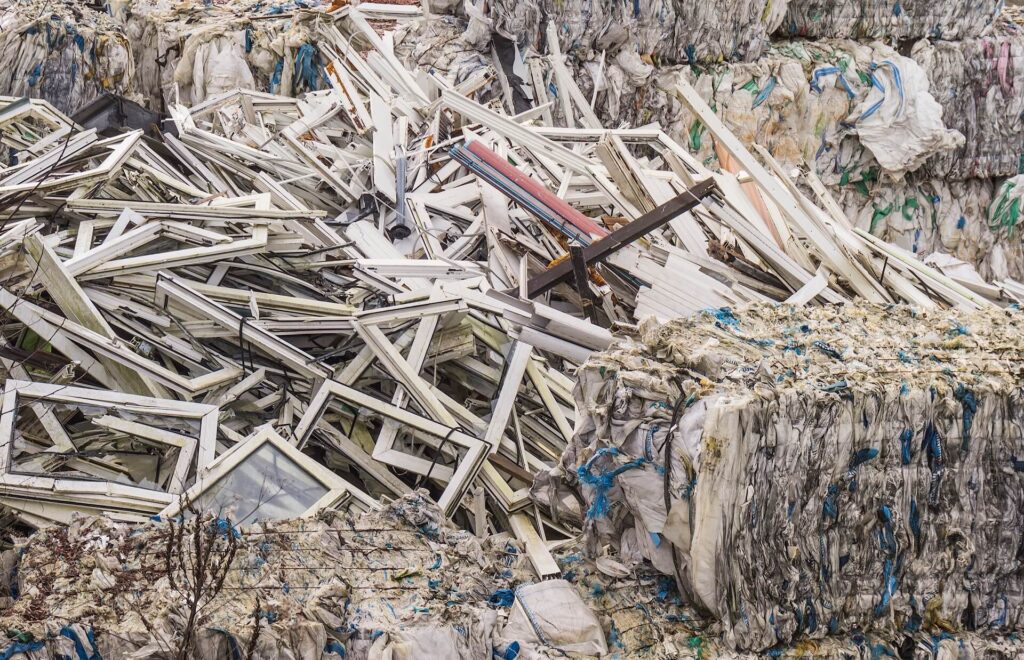Unlocking the Power of Changing Streams Membership
In today's rapidly evolving construction industry, sustainability is no longer just a buzzword—it's a necessity. As the industry faces increasing pressure to reduce its...
Read more
As the population and urbanisation grows, so does the need for houses, buildings and infrastructure. It is estimated that global buildings will double by 2060 – “the equivalent of adding an entire New York City to the world, every month, for 40 years.” The problem is that these developments will require enormous amounts of construction, with the environment paying a heavy price.
The construction industry is one of the most environmentally destructive industries, generating huge amounts of waste and requiring considerable amounts of raw materials. Shockingly, the statistics show that construction and demolition account for 30% of the total waste produced globally, with construction accounting for 40% of annual global CO2 emissions and 19% of global plastic production. It is clear that if construction continues business-as-usual, essential government targets and global agreements will not be met. One of the areas that needs to be addressed as the world shifts towards sustainability, is the industry’s reliance and mismanagement of plastic.

Plastic plays a major role in construction. The most commonly used plastic involves polyvinyl chloride (PVC), high-density polyethylene (HDPE), expanded polystyrene (EPS) and extruded polystyrene (XPS). The characteristics of these plastics make them ideal building materials; they are lightweight, cheap, strong, water resistant and durable and are used for sealing, pipes, cables, floor coverings and insulation. The construction industry is also a major consumer of single-use plastic, with plastic films used throughout the packaging of building supplies.
The primary sources of plastic waste in construction are derived from cut-offs, over-ordering, improper storage and handling, and packaging, whilst plastic from demolition is derived from discarded building elements – pipes, windows, gutters etc. At present, large amounts of this plastic waste is mismanaged and sent to landfill in mixed waste skips, and this does not seem to be slowing; plastic waste in construction was seen to increase between 2018-2021 by 45.72%, even though plastic waste in the UK fell by 2.68%.
Recycling plastics in construction is challenging due to several factors; plastic used in construction is often mixed with other materials which makes it difficult to separate and recycle; and construction plastics are exposed to various contaminants like dirt, paint, or adhesives, which further complicates the recycling process. Another issue is the wide range of plastic types used in construction, each with different properties and recycling requirements. Sorting and categorising these plastics can be time-consuming and costly.
The industry is aware of its plastic problem; The Considerate Constructors Scheme (CCS) launched an industry-wide campaign, “Spotlight on…plastics and packaging” to raise awareness on how the construction industry can reduce, reuse and recycle plastics and packaging. This survey, conducted across the UK and Ireland, found that; 95% of construction professionals are aware that the industry needs to reduce its plastic and packaging consumption, 51% have little understanding of the rules and regulations surrounding plastics and packaging, and only 44% know how to recycle different plastic and packaging materials. This survey allowed The CCS to develop its Plastics and Packaging Guidance Document.
In March 2022, 175 nations agreed to a draft resolution to End plastic pollution: Towards an International legally binding instrument. This legally binding agreement is set to end plastic pollution by 2024, by addressing the entire lifecycle of plastics, including their production and disposal. If this agreement is to be met, the construction industry needs to reflect on its impact, taking into account its plastic pollution and consumption, with the government supporting this transition through policies and financial incentives.
Policies could help tackle plastic pollution in the industry by presenting clear actions for people in the industry that enables sustainable change. Financial incentives are important as they could motivate and encourage people to make sustainable choices that they otherwise would not have made.

These policies and incentives could help support the construction industry’s transition away from plastic. Their success will be dependent on effective enforcement, monitoring and evaluation from governmental bodies, however, with reducing plastic no longer a choice, enabling this smooth transition should be a government and industry priority.
In conclusion, policies and financial incentives can have a transformative impact on plastic pollution in construction. By enacting stringent regulations, promoting circular economy principles and offering financial support, governments can drive the adoption of sustainable alternatives and reduce the industry’s reliance on plastics. All those in the industry must work together to create a more sustainable construction sector, one that prioritises environmental stewardship and minimises the harmful effects of plastic pollution.
It also must be acknowledged that in addition to reducing plastic, the world must consider the reality of its current growth predictions. Even with recycling, better waste management, and incentives for sustainable alternatives, endless growth drives the demand for more materials and resources. Beyond plastic, so many materials are used in construction (steel, concrete, adhesives etc), which all have a massive impact on the planet. There is a fundamental need for adaptation within the construction sector, which prioritises utilising existing buildings and infrastructure, rather than continuous demolition and rebuilding.
Here at Changing Streams, we want to be part of the movement to reduce plastic in construction and construction’s movement towards sustainability. We have partnered with organisations, including The Brick Development Association (BDA) to undertake research and create a roadmap to plastic reduction. The BDA is responsible for developing standards and best practice within the industry, working directly with Architects, Developers, Builders, Government and other specialists. The collaboration of these teams is vital as it is only through their participation that industry might finally end its toxic relationship with plastic.